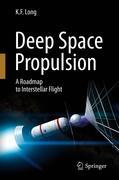
The technology of the next few decades could possibly allow us to explore with robotic probes the closest stars outside our Solar System, and maybe even observe some of the recently discovered planets circling these stars. This book looks at the reasons for exploring our stellar neighbors and at the technologies we are developing to build space probes that can traverse the enormous distances between the stars. In order to reach the nearest stars, we must first develop a propulsion technology that would take our robotic probes there in a reasonable time. Such propulsion technology has radically different requirementsfrom conventional chemical rockets, because of the enormous distances that must be crossed. Surprisingly, many propulsion schemes for interstellar travel have been suggested and await only practical engineering solutions and the political will to make them a reality. This is a result of the tremendous advancesin astrophysics that have been made in recent decades and the perseverance and imagination of tenacious theoretical physicists. This book explores these different propulsion schemes – all based on current physics – and the challengesthey present to physicists, engineers, and space exploration entrepreneurs. This book will be helpful to anyone who really wants to understand the principles behind and likely future course of interstellar travel and who wants to recognizes the distinctions between pure fantasy (such as Star Trek ’s ‘warp drive’) and methods that are grounded in real physics and offer practical technological solutions for exploring the stars in the decades to come. Brings together serious ideas from scientists around the world investigating groundbreaking new technologies for spacecraft propulsion systems. Separates the realistic from the fantastic and makes clear which popular concepts in science fiction arebased on unproven physics and which are based on real science. Presents convincing arguments on how we can achieve the seemingly impossible task of sendingrobotic explorers many millions of miles to distant stars in the next few decades. INDICE: Foreword. Preface. Chapter 1: Reaching for the Stars. Chapter 2: The Dream of Flight and the Vision of Tomorrow. Chapter 3: Fundamental Limitations to Achieving Interstellar Flight. Chapter 4: Aviation - The Pursuit of Speed, Distance and Height. Chapter 5: Astronautics - The Development and Scienceof Rockets. Chapter 6: Exploring The Solar System and Beyond. Chapter 7: Exploring Other Star Systems. Chapter 8: Solar System Explorers - Historical Spacecraft. Chapter 9: Electric and Nuclear-Based Propulsion. Chapter 10: Sails andBeams. Chapter 11: Nuclear Fusion Propulsion. Chapter 12: External Nuclear Pulse Propulsion. Chapter 13: Towards Relativistic Propulsion - Antimatter and the Interstellar Ramjet. Chapter 14: Aerospace Design Principles in Interstellar Flight. Chapter 15: The Scientific, Cultural and Economic Costs of Interstellar Flight. Chapter 16: The Role of Speculative Fiction in Driving Technology.Chapter 17: Realizing the Technological Future and The Roadmap To The Stars. Epilogue. Appendices. Index.
- ISBN: 978-1-4614-0606-8
- Editorial: Springer New York
- Encuadernacion: Rústica
- Páginas: 340
- Fecha Publicación: 28/11/2011
- Nº Volúmenes: 1
- Idioma: Inglés
